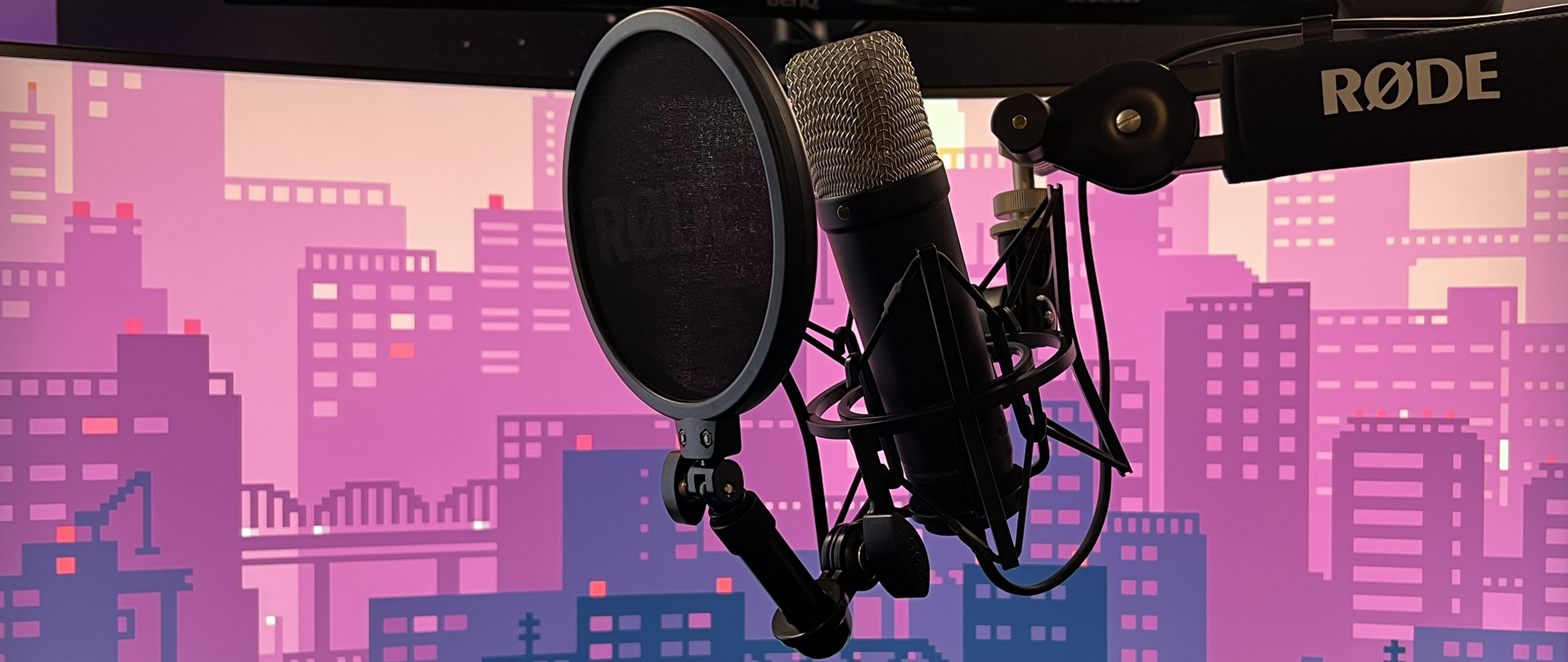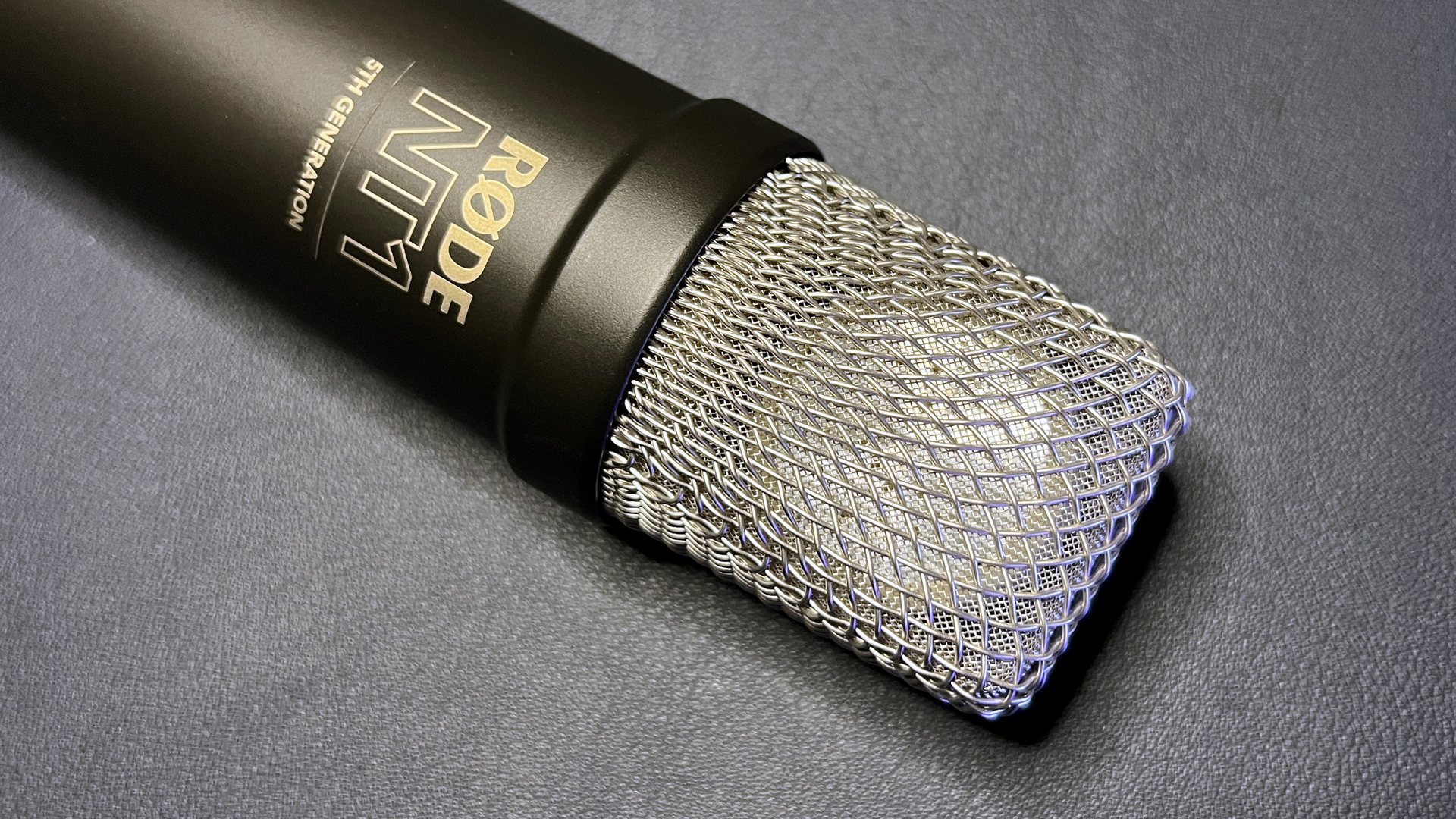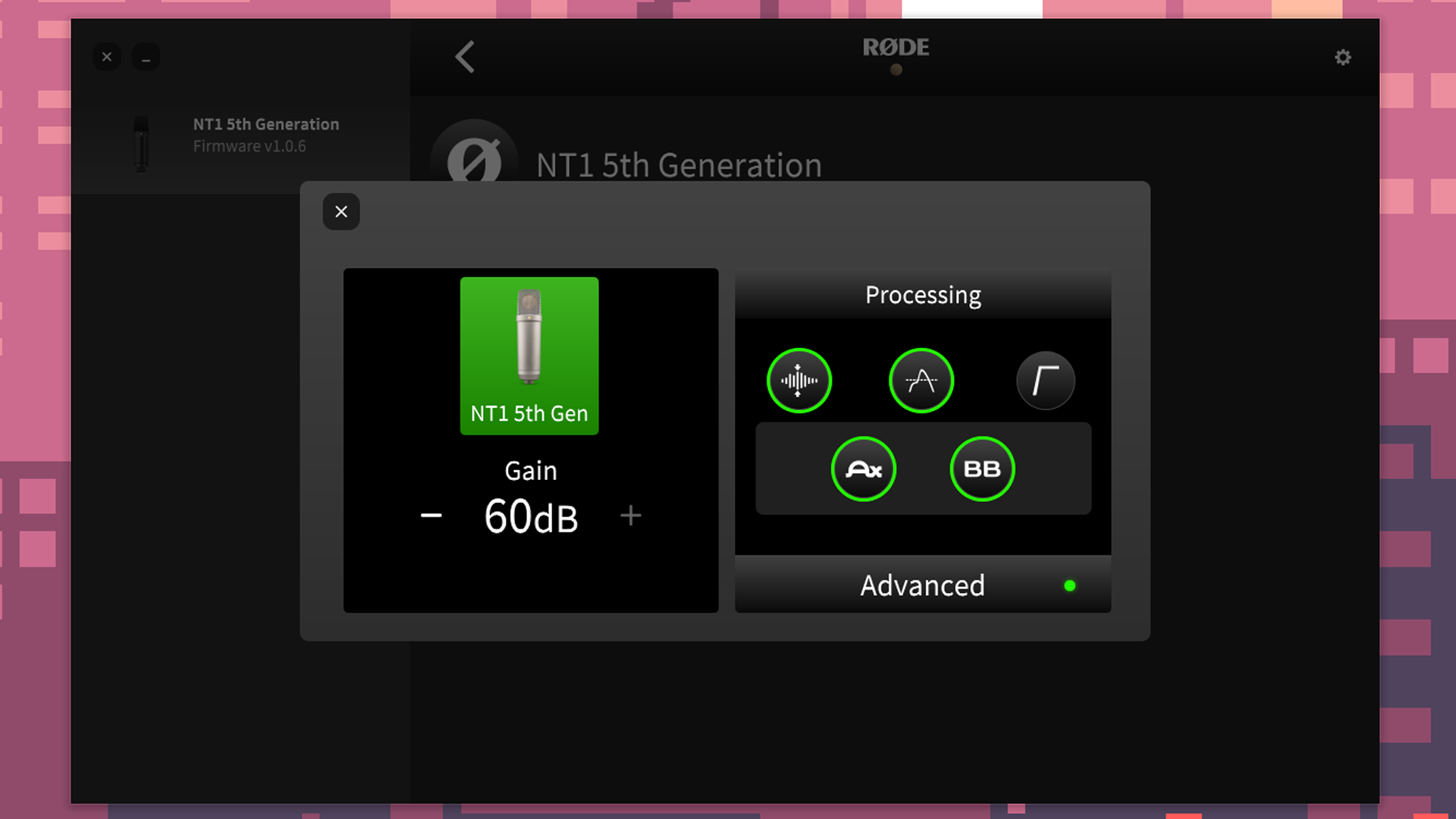Tom's Hardware Verdict
The NT1 5th Generation adds USB-C connectivity and 32-bit float audio recording to an iconic mic. But who’s it for?
Pros
- +
Connects via USB-C and XLR
- +
Includes shock mount and cables
- +
32-bit float recording
Cons
- -
No on-mic controls
- -
No headphone jack
Why you can trust Tom's Hardware
The Rode NT1 is a classic: first released in the early 90s, the NT1 was Rode’s (then Freedman Electronics) first microphone. It was allegedly so popular that its sales were said to have taken off “like a rat up a drainpipe,” earning it the nickname “Rodent-1” — which was then changed to “RØDE NT1.” This unverified story of how the brand got its name is quite possibly apocryphal, but it doesn’t change the fact that the NT1 has been a popular studio mic for over three decades.
But when you’re looking for the best gaming microphone, a studio mic probably isn’t your first choice. Studio mics are generally analog-only, which means you’ll need an audio interface to use them with your PC.
Rode’s newest NT1 — the NT1 5th Generation — is the brand’s first microphone with dual-connectivity, which is cleverly implemented: tucked inside the mic’s XLR connector is a USB-C port. Turning a studio mic into a USB mic involves more than just an added port, of course, and the NT1 5th Generation has its own audio interface and digital signal processor (DSP) for high-resolution (24-bit/192 kHz) recording. It also features 32-bit float recording, which allows for virtually unclippable audio (though you’ll need a DAW that supports this). The NT1 5th Generation is available in both black and silver.
Design of the NT1 5th Generation
The NT1 5th Generation looks similar to its predecessors. It has a machined aluminum body in a matte black finish (it also comes in silver), with an internally shock-mounted HF6 capsule under a silver mesh grille. It measures 7.44 inches (189mm) tall with a diameter of 2.05 inches (52mm).
Like most of Rode’s microphones, the NT1 5th Generation feels robust and well-built, though it weighs less than it looks. The microphone alone weighs 10.86 ounces (308g), which is lighter than both the Rode NT-USB+ (1.2lbs/540g) as well as the compact Rode X XCM-50 (1.08lbs/492g).
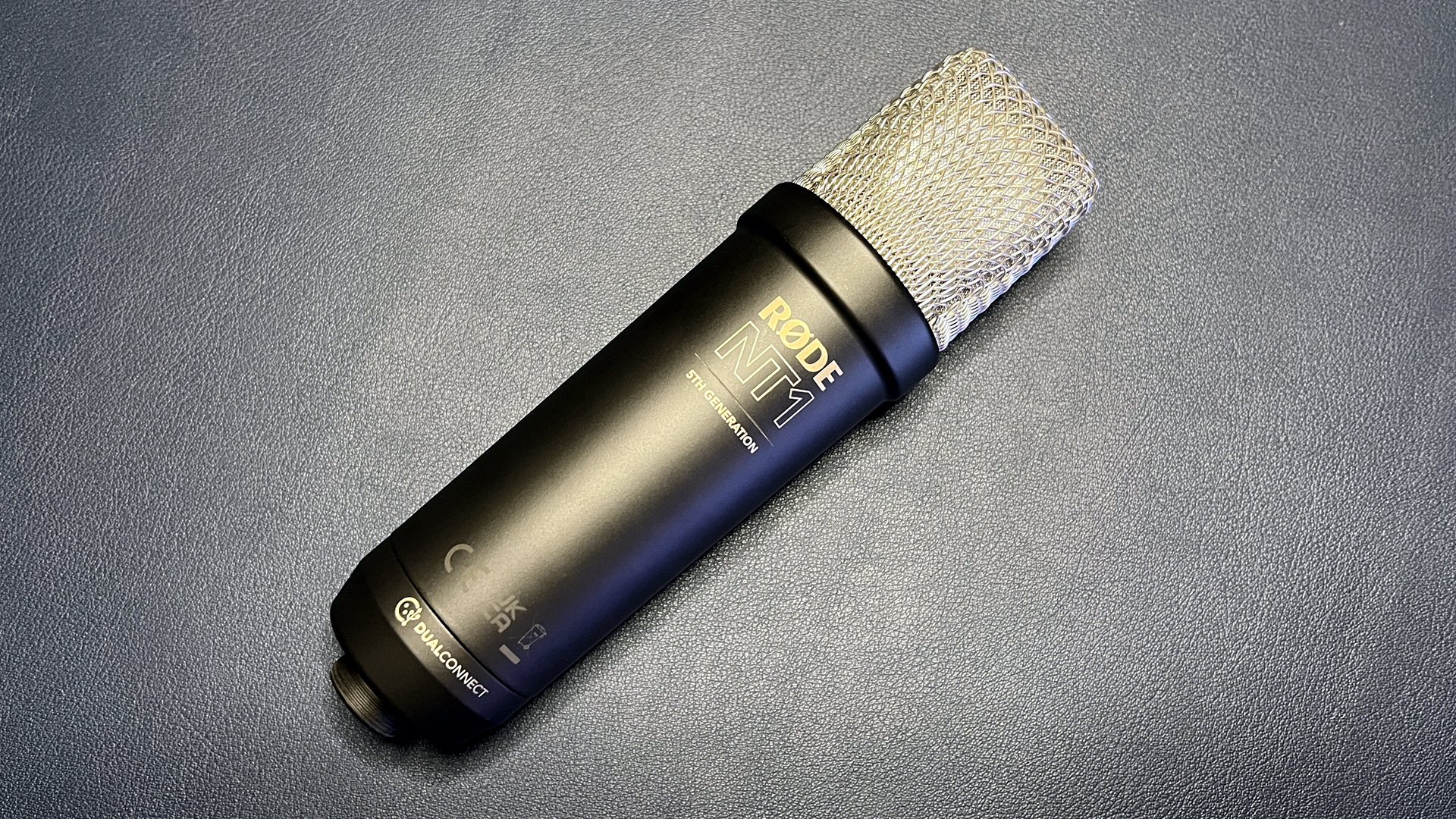

The NT1 5th Generation is a side-address cardioid microphone, so positioning matters: the mic sits vertically and you speak into one side of it. The side you speak into is indicated by a small gold dot on the mic’s neck (this isn’t otherwise readily apparent, as Rode’s logo and the mic’s name are printed on the other side).
The NT1 5th Generation is a dual-connect mic that supports both XLR (analog) and USB-C connectivity, and the bottom of the mic features an XLR connector with a built-in USB-C port. You do need a pretty slim USB-C cable to fit next to the XLR prongs (luckily, Rode includes one).
Get Tom's Hardware's best news and in-depth reviews, straight to your inbox.
The mic is pretty simple, overall, with no onboard controls for gain, volume, or mute, and no headphone jack for direct zero-latency monitoring. This isn’t too surprising for an XLR mic (which is what the NT1 has been, up until this generation), which plugs into an audio interface. But many USB mics do have these features — if you’re not planning on switching to an audio interface eventually, you may find the lack of controls frustrating.

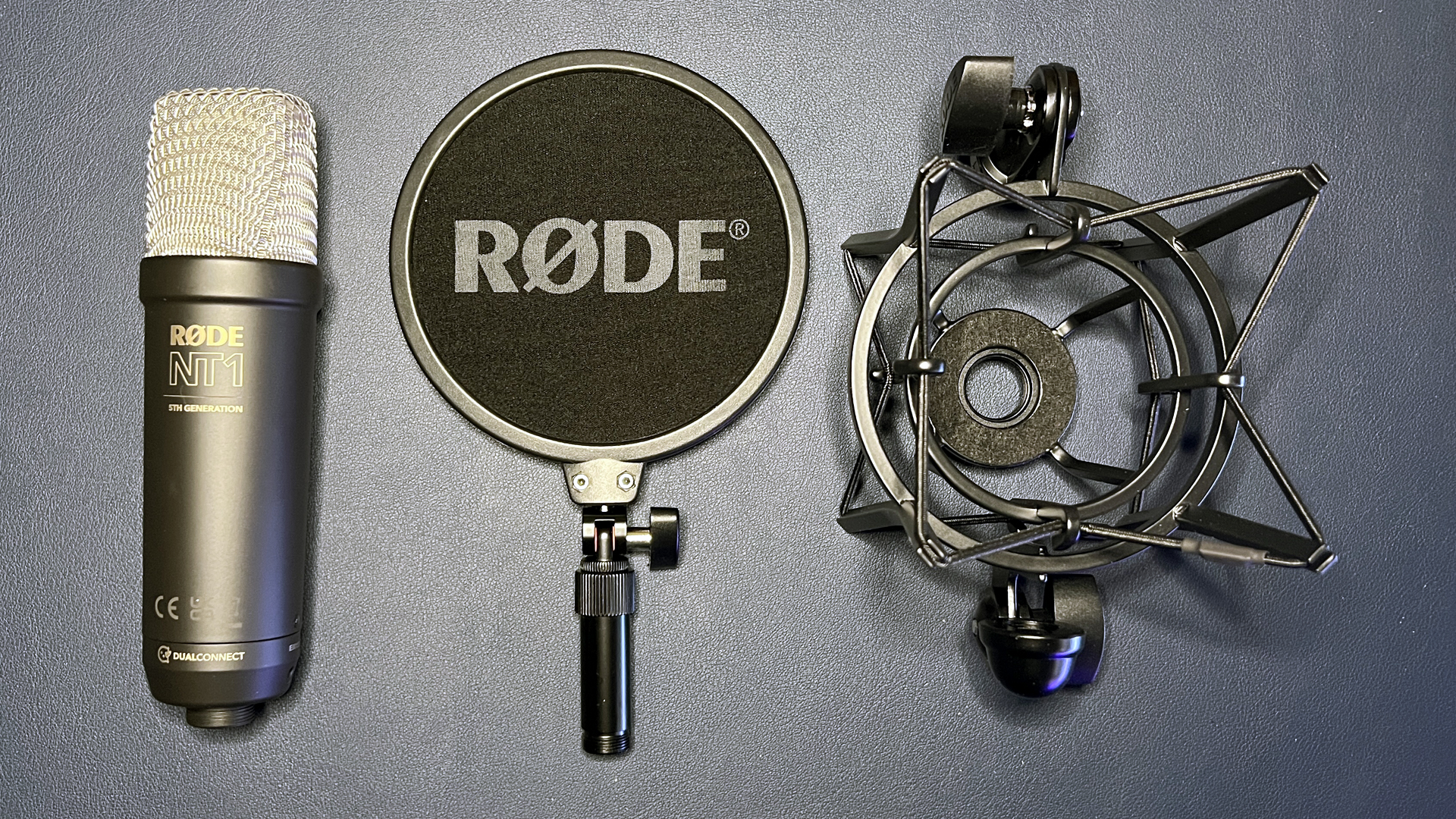
The NT1 5th Generation comes with several accessories in the box, including Rode’s SM6 studio microphone suspension shock mount kit ($59 if purchased separately), which features a detachable pop filter. You also get a 9.8-foot (3m) USB-C to USB-C cable, a (bright red) 20-foot (6m) XLR cable, a dust cover, and a wavy blue “XLR ring,” which goes inside the mic’s plug to help secure loose third-party XLR cables.
The shock mount measures about 5.25 inches (133mm) in diameter and is approximately 8.27 inches (210mm) deep. The pop filter is 5.25 inches (133mm) in diameter and attaches to the front of the shock mount, sitting around 2.5 inches (63.5mm) in front of the mic. It has two axes of adjustment and a telescoping arm, which extends for a total height of 10 inches (254mm). The shock mount and pop filter are primarily made of metal and add an extra 1.5 pounds (682g)) to the mic’s weight.
The shock mount is designed to attach to a boom arm or a microphone stand, but the mic does not include a desktop stand. It’s probably worth investing in a boom arm if you’re thinking about upgrading your audio setup anyway, but — if you’re not quite there yet — there are plenty of USB mics on our list of best gaming microphones that come with desktop stands.
Specs
Capsule Type | Pressure Gradient Condenser |
Frequency Response | 20 Hz - 20 kHz |
Polar Pattern | Cardioid |
Orientation | Side Address |
Sample Rate | 48/96/192 kHz |
Bit Depth | 24-bit (32-bit floating) |
Connectivity | USB-C, 3-pin XLR |
Cable | USB-C to USB-C (9.8ft/3m), XLR (19.6ft/6m) |
Software | Rode Central, Rode Connect, Rode Unify |
Dimensions (L x W) | 7.44 x 2.05 x 2.05 inches / 189 x 52 x 52 mm |
Weight | 10.86 ounces / 308g |
MSRP / Price at Time of Review | $259 / $259 |
Release Date | Feb. 20, 2023 |
Performance of the NT1 5th Generation
The Rode NT1 5th Generation is a large-diaphragm condenser microphone with a side-address cardioid polar pattern. It has a wide frequency response of 20 Hz - 20,000 Hz, and it records audio in 24-bit as well as 32-bit float (more on this in a moment) at sampling rates of 48, 96, and 192 kHz. This puts its recording quality well above most gaming microphones, which top out at 24-bit/96 kHz (and that’s only a few).
One of the most notable new features of the NT1 5th Generation is its ability to record 32-bit float audio, which allows for a significantly larger dynamic range than standard 16- or 24-bit audio. The dynamic range of 32-bit float audio is so large that it virtually eradicates clipping, which is a type of waveform distortion that happens when audio is too loud. (“Virtually,” because there are multiple reasons for clipping — not all can be avoided by recording in32-bit float.) This means that the NT1 5th Generation will be able to capture audio at any volume level without distortion, making it ideal for situations where there might be unexpected spikes in volume (such as live events).
Dynamic range is not the same as resolution, which corresponds to bit-depth. Bit-depth refers to the number of bits of information an audio sample has, or the number of amplitude levels it can capture. The theoretical maximum bit-depth can be calculated by raising 2 to the power of [number of bits] — 16-bit audio can have at most 65,536 steps (2^16), 24-bit audio can have 16,777,216 steps (2^24), and 32-bit audio can have 4,294,967,296 steps.
The dynamic range is based on the difference between the loudest and softest signal that the mic can record, and this is much larger in 32-bit float than it would be in standard 32-bit. This is because 32-bit float is coded differently — instead of being coded as a fixed point number, it’s coded as a 24-bit number (well, actually, 1 bit indicates sign and 23 bits are for the fraction) with an 8-bit exponent. This doesn’t change the maximum bit-depth or resolution, but it does change the dynamic range. Recording in 32-bit float is useful in some situations, but it’s not objectively better than recording in standard 24-bit in most situations — especially for gamers, streamers, and podcasters in a controlled environment.
The NT1 5th Generation has the same HF6 condenser capsule as its 4th-gen predecessor, so it hasn’t changed much in terms of sound. It was, and still is, a great-sounding mic, especially for vocals: it’s crisp and clear, with a warm lean and a decent amount of depth. You’ll need to be careful with positioning, however, because getting too close quickly results in too much depth (proximity effect), and the mic has a fairly tight cardioid polar pattern.
Features and Software of the NT1 5th Generation
The NT1 5th Generation works well as a plug-and-play device, and it doesn’t require any software to run. It works with three of Rode’s apps: Rode Central, Rode Connect, and the recently-released Rode Unify. You don’t need to download all of these apps, as all will let you adjust the NT1 5th Generation’s advanced DSP settings. Rode Central is just for adjusting DSP settings (and updating firmware), while Rode Connect and Rode Unify include recording and channel mixing tools.
Rode’s apps let you access the NT1 5th Generation’s advanced DSP settings, which include a compressor, a high pass filter, noise gate, and Aphex enhancements “aural exciter” and “big bottom.” In addition to toggling these settings, you can also fine-tune them at a granular level (which you can’t do with Rode’s NT-USB+).
This is, of course, only applicable when the mic is plugged in via USB; none of this applies if you’re using it with an analog XLR connection.
Bottom Line
The Rode NT1 5th Generation is an excellent mic, but so were its predecessors. The big change — and it’s pretty big — is that the formerly XLR-only NT1 is now a USB-C mic that can record 32-bit float audio. I’m not sure how many users need dual connectivity on a mic, but it might be tempting for someone who’s looking to move into a more professional audio setup (though you could also just buy two mics). I want to love the NT1 5th Generation as a plug-and-play USB mic, but it doesn’t have most of the features USB mics come with, such as gain control and an on-mic headphone jack — not an issue if you use it as an analog mic with an audio interface, but not my first choice for a USB mic.
The NT1 5th Generation’s ability to record 32-bit float audio is unique on this type of mic, but it’s not something the average person has much use for. Remember, dynamic range is about volume, not resolution. 32-bit float is most necessary in situations where volume levels are unpredictable, e.g., live concerts, or journalists in warzones — not streaming by yourself (depending on the streamer, I guess).
The NT1 5th Generation is a great mic and it’s very versatile, but most users don’t need that much versatility. The Rode NT-USB+ is an excellent USB mic with on-mic controls that costs $100 less, while the Rode PodMic is a solid XLR mic for just $99, and you could buy both for the price of the NT1 5th Generation. Of course, if you’re looking to record in 32-bit float, this is a fairly budget-friendly option.

Sarah Jacobsson Purewal is a senior editor at Tom's Hardware covering peripherals, software, and custom builds. You can find more of her work in PCWorld, Macworld, TechHive, CNET, Gizmodo, Tom's Guide, PC Gamer, Men's Health, Men's Fitness, SHAPE, Cosmopolitan, and just about everywhere else.
